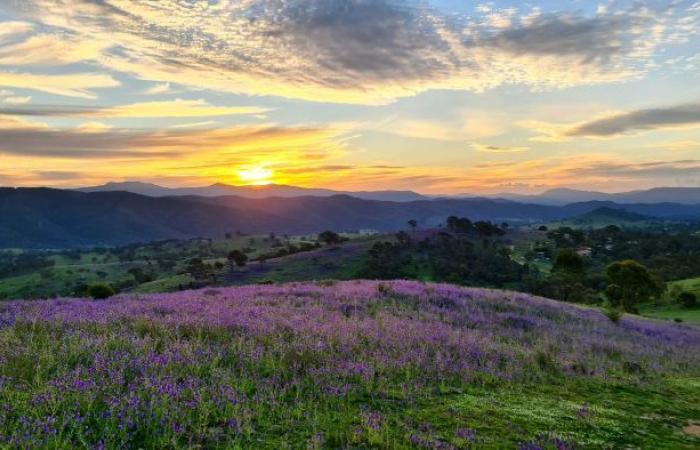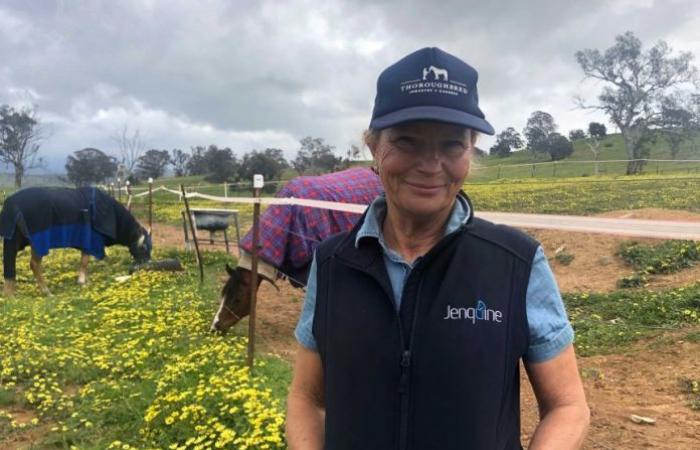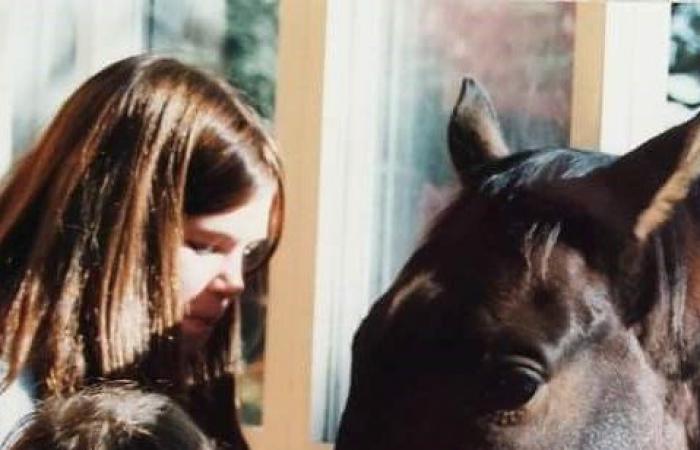You will be forgiven for raving about the purple fields that covered the slopes of Canberra this spring.
But aside from a beautiful photo, the plant known as Paterson’s Curse doesn’t have much to offer the landscape.
It’s an invasive weed that not only takes up space, but also kills native wildflowers – and when ingested by farm animals, it often kills them too.
The wet weather caused by La Niña this year has resulted in a tremendous resurgence of the facility, and has left ACT Parks a massive task of containing the spread.
Where did it come from
Paterson’s Curse traveled to Australia from Europe and thrived here as there are no natural enemies in the Australian countryside.
Also known as Salvation Jane, Riverina Bluebell, and Echium plantagineum, the plant can rest underground, meaning landowners may not even know they are home to it.
This year, Canberra’s wet winter and early spring has given a chance to wake up again.
Steve Taylor, ACT Parks’ Invasive Plant Coordinator, said the spread hasn’t been this bad in many years.
“Invasive plants are high-risk weeds and can take advantage of the recirculation of rain much faster than the native plants, giving them a competitive advantage,” he said.
It’s a big problem for rangers, especially in areas that have been burned by bushfires, like Namadgi National Park.
The ACT spends approximately $ 2.1 million annually on managing invasive plants.
“It is the greatest threat to biodiversity on our reserves,” said Taylor.
“That corresponds to 40,000 to 50,000 control points and a total of around 15,000 hectares of control work.”
A deadly pasture
Loading
But it is not just the environment that is affected by Paterson’s curse.
Pollen from the plants causes hay fever in allergy sufferers – especially in years when the weeds get out of control.
And horses and animals that accidentally eat it very often die of liver failure.
According to the ACT Equestrian Association, at least 50 horses died as a result of eating the plant after the 2003 bushfires when Paterson’s Curse was one of the first things to grow back in the paddock.
Horses usually don’t find it tasty, but sometimes they accidentally eat it or when there isn’t enough feed in the paddock.
Equine vet Jen Stewart said it was a terrible way to die.
“They’ll come with acute liver failure, so they won’t be colored, they look sick,” she said.
“Because it’s so acute, when they look sick, you’re behind the game … and it’s hard to come back to.”


A word that scares every horse owner
Meg Doepel knows the pain of losing a horse to the weeds only too well.
“I was at work and got a call from some dear friends to say you had better come over. Zali doesn’t look good, ”she said.
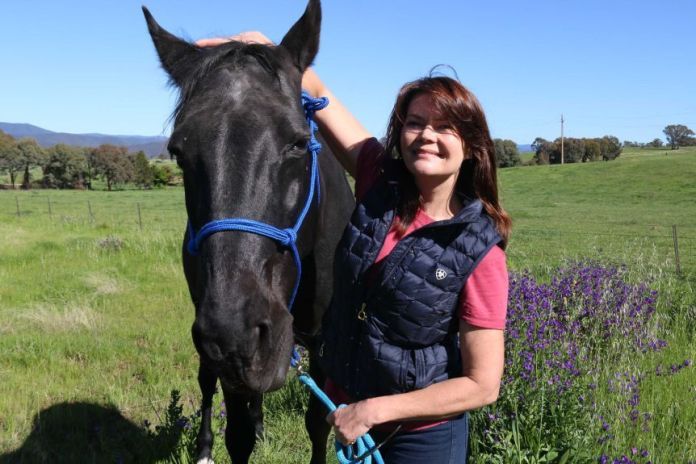

Your horse, a loved part of the family, didn’t make it.
“Zali was my first horse and she should be my last – we should grow old together,” said Ms. Doepel.


When Zali was hospitalized, the vets thought it could be Hendra virus, a bat-borne disease that is very fatal to both humans and horses.
For the next two weeks, Ms. Doepel had to wear a protective suit when visiting the horse.
It eventually became clear that Zali had liver failure from Paterson’s curse. But by then it was too late to save her.
“Wherever Zali was buried, I actually planted a red blooming chewing gum. I’m still sitting underneath and sometimes have a scream – the pain doesn’t really go away. “
The family has since fallen in love with another horse named Mr. Albert, who is kept away from the purple poison.
“Paterson’s curse is a word that scares every horse owner,” said Ms. Doepel.
How do we get rid of it?
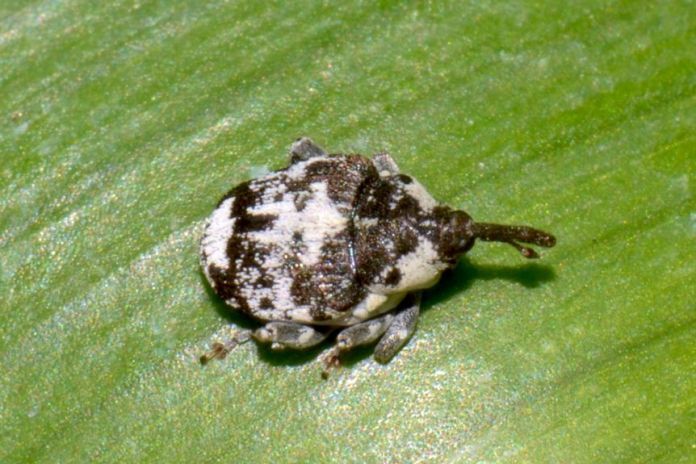

One of the most effective ways to get rid of Paterson’s curse is to introduce a natural enemy.
The unlikely hero in this story is the tiny Paterson’s Curse Crown Weevil, a beetle that only eats the plant and does not destroy other plants.
“It takes a while for the number to increase when Paterson’s curse breaks … but eventually it does [help]and helps a lot, “said Taylor.
For those who don’t have weevils on hand, you can always use a shovel to chop the weeds from the ground and dispose of them in a secure bag.
ACT Parks also want information from the public about suspicious plants, which you can report through the Canberra Nature Map website.
“We are monitoring these websites and will review them to stop the spread,” said Taylor.
These were the details of the news Paterson’s curse looks pretty, but it’s growing in Canberra and threatening... for this day. We hope that we have succeeded by giving you the full details and information. To follow all our news, you can subscribe to the alerts system or to one of our different systems to provide you with all that is new.
It is also worth noting that the original news has been published and is available at de24.news and the editorial team at AlKhaleej Today has confirmed it and it has been modified, and it may have been completely transferred or quoted from it and you can read and follow this news from its main source.

